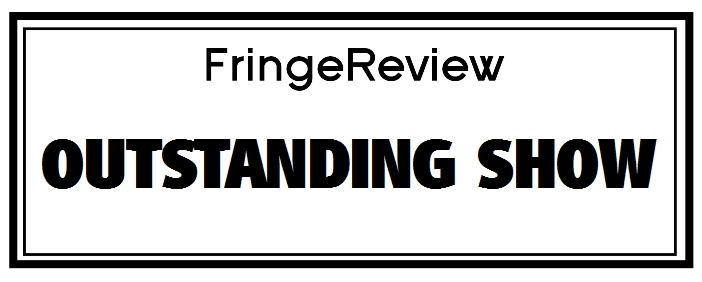FringeReview UK 2023
Dance of Death
Nationaltheatret

Genre: Adaptation, Comedic, Costume, Drama, European Theatre, Mainstream Theatre, Short Plays, Theatre, Translation
Venue: The Coronet Theatre, Notting Hill
Festival: FringeReview UK
Low Down
A hectic in the blood of 20th century drama. It’s just here the hectic is realised like never before.
Directed by Marit Moum Aune, Composer Nils Petter Molvær, Set and Costume Designer Even Børsum, Lighting Designer Agnethe Tellefsen, Sound Designer
Bendik Toming, Hair and Makeup Design Eva Sharp, Translation, Kjell Askildsen.
Produced by Nationaltheatret, Supported by Stiftelsen InterNational
Till March 31st
Review
Perhaps Strindberg’s time has come – yet again. A bit like Kierkegaard’s storm petrel, in interesting times. Only last year the Arcola’s Dance of Death in a new version by Rebecca Lenkiewicz toured from Bath to London. Directed by the Arcola’s artistic director Mehmet Ergen it featured a loaded subtext – and musical surtext – where real-life couple Hilton McRae and Lindsay Duncan gleamed to vulpine perfection. Two days after this new production opened at the Coronet Theatre, Radio 3 broadcast Conor McPherson’s version with Hattie Morahan and Robert Glenister.
They were in English of course, and this is the Coronet, home to hybrid Norwegian/English productions of Ibsen; or as here with the Norway’s Nationaltheatret mostly Norwegian – their acclaimed Little Eyolf flashed past here in three days back in 2018. Played to huge acclaim in Norway, this too is a touring production, only here for two weeks. Grab it.
And there’s no chance you’d miss the power of this work even if there weren’t clear, eyesight-friendly surtitles left and right. But that’s not all. The audience gust with laughter as in Kjell Askildsen’s witty, demotic English, the Norwegian actors break out into 21st century asides. Just at key moments. It really does underscore the black comedy. Marit Moum Aune (whose hybrid 2019 The Lady From the Sea was also acclaimed here) directs acclaimed Norwegian actors Pia Tjelta, Jon Øigarden and Thorbjørn Harr. Though running for the standard 85 minutes, the text is slightly abridged, and there’s an effective da capo ending.
The raffish Coronet stage is transformed into a curiously plush affair, in Even Børsum’s set and costumes. Against period dress other period elements are set in amber, like mid-century surreal paintings by Magritte or Dervaux, with a strong rash of Bacon. All burgundy carpet, minimal props – two far-flung chairs and a central table over which is framed a small Wendy-house in skeletal black metal (think Bacon’s Innocent X). That’s not the only dead thing. At a key moment beautifully mounted dead animals descend on circular plinths, Bacon high-tech. The slowly revolving hare is possibly the most unnerving. Composer Nils Petter Molvær enjoys plucking atmosphere from a guitar’s lower register, embedded in soft instrumental chords. Agnethe Tellefsen’s lighting subtly gradates from glare to gulphs.
Pia Tjelta’s former actress Alice is trapped in an apparently loveless marriage approaching twenty-five years: to Jon Øigarden’s Edgar, an unpopular captain whose career’s stalled as he commands an island quarantine station. Anti-social, the couple have even set their departed children against them both. Ten years Alice’s senior Edgar suffers from heart trouble he privately knows will kill him. “You blame me for not dying just now?” asks Edgar. “No. I blame you for not dying before we met!”
Tjelta’s gimlet-eyed watchfulness fuels her every move: whether scornful, sexual, or scabrously funny. Øigarden’s more youthful than some Edgars, more active, theatrically romping with every faux or real heart attack. You feel his performative little deaths might have acted his former wife off the stage. Certainly his burlesque gestures wrongfoot everyone else. But that of course underestimates Tjelta’s sheer raptor exultance, her silken unhurried pounce.
Over who the greater monster is Strindberg remains ambivalent. We might feel differently. And there’s Thorbjørn Harr’s Karl too, whose vampirism reveals itself as he and the Captain’s wife make explicit what other productions only play with. Strindberg stripped bare to his language, even.
There’s intimacy too; as they spar and declare hate they entwine, kiss necks, writhe in a sheet of old flame that might be heaven recalled in hell. “He seduced me” Alice explains later to Kurt. That first seduction seems played out forever like ritual obsession. “Love and hate.” That’s nothing to what she does with him.
Harr’s Kurt is the compound these two catalysts – unchanged in themselves – act upon, charge with their own love-hatred. You can see Harr darken with poison like litmus paper. Harr’s straight-man palpably takes on the couple’s vengeance as he discovers how much they’ve acted on Kurt, his marriage and children over the years. Or have they? As the couple plot feint and counterplot, Harr’s reabsorption in Kurt’s and Alice’s former attraction bursts out in at first as fascinated sexual dance; then as it’s replayed, disgust.=
Here in a beautifully-observed Huit-Clos – we end in this version with the same words as we began – hilarity nuzzles histrionics as the actors’ sheer violence of delivery is quite other to anything I’ve experienced in English Strindberg. The physicality, menace and seethe of all three characters reminds us this is where expressionism began. Physicality breeds extreme gesture that can only collapse to comedy. Its logic is palpable. Though comedy is never absent in English productions – the Arcola or indeed Trafalgar Studios’ 2012 revival when Kevin R McNally and Indira Varma slide off the sofa and end in laughter – here it’s supremely organic, borne from gesture, self-loathing desire, reaction.
Sartre’s Huis Clos isn’t far from here either. Ionesco’s The Chairs explicitly sets the scene on a circular tower. There’s explicit hommage too in Albee’s Who’s Afraid of Virginia Woolf?, Osborne’s Look Back in Anger, Beckett: Strindberg’s hellish a trois here, as well as elsewhere is a hectic in the blood of 20th century drama. It’s just here the hectic is realised like never before.


















































